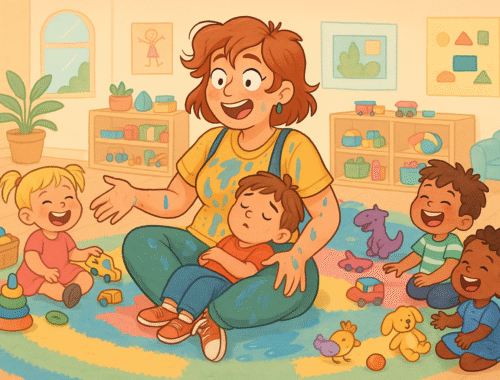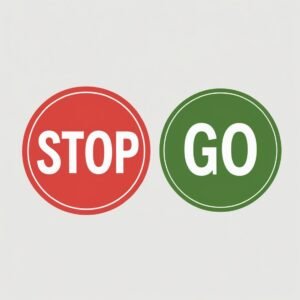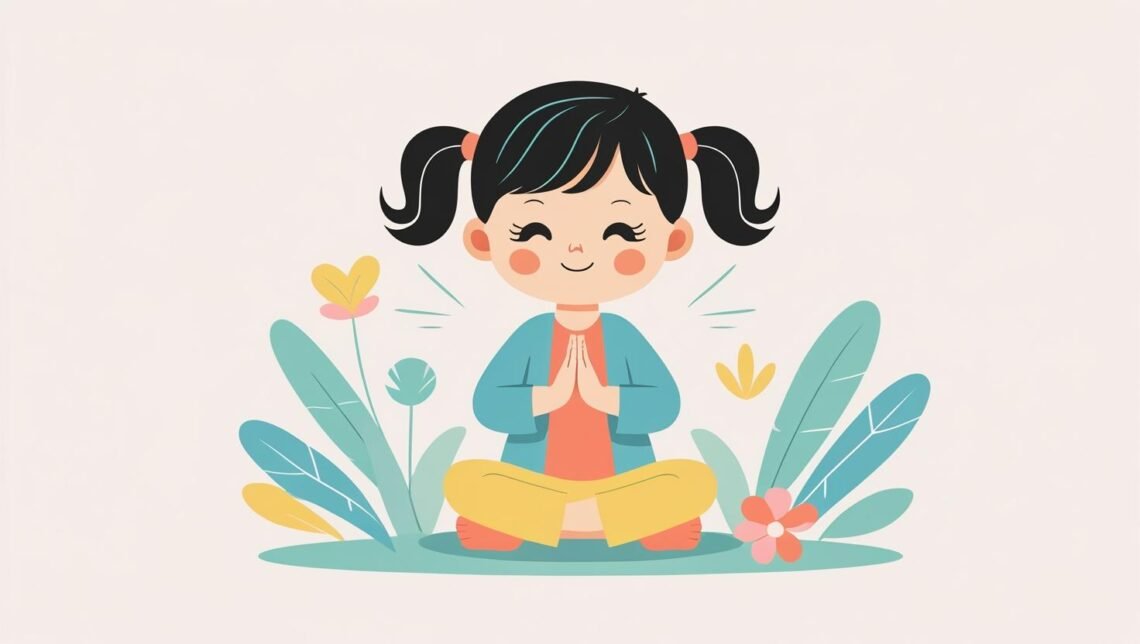
Emotional Intelligence: Teaching Children About Self-Regulation
In the last post, we explored self-awareness—how children begin to recognize their own emotions, thoughts, and behaviours. Now, we’re digging into the next step: self-regulation. Because once children start to understand what they’re feeling, the big question becomes… what do they do with those feelings? In this post, we’ll look at how we can support preschoolers in managing impulses, handling emotions, and building the skills to pause, process, and respond—with a little more calm and a lot more confidence.

As a preschool teacher, I’ve come to see just how foundational self-regulation is in helping young children navigate their day (and let’s be honest—keeping the classroom from descending into total glitter-fueled chaos). Self-regulation is a child’s ability to manage their emotions, behaviors, and thoughts in ways that make sense for the moment. In the early years, this might look like taking a deep breath instead of roaring like a dinosaur when they’re frustrated, waiting patiently (ish) for a turn, or using words instead of launching a toy missile during a disagreement (Blair, C., & Raver, C. C. 2015).
But let’s be real—it’s not a skill that magically appears after nap time. It grows slowly, with lots of practice, gentle guidance, and probably a few “try again” moments. Self-regulation is closely tied to emotional intelligence, helping children recognize what they’re feeling and make choices about how to respond. It’s essentially the bridge between “I feel mad!” and “I’m going to handle this like a tiny emotional superhero.” And when kids begin to build this bridge? That’s when we start seeing real growth—in learning, friendships, and even cleanup time.

Below you’ll find a breakdown of five key subcomponents of self-regulation: impulse control, emotional regulation, attention and focus, delayed gratification, and behavioural flexibility. Each one plays its own starring role in helping young children manage themselves in a busy, often unpredictable preschool world (where someone is always crying and the glue sticks are mysteriously empty). Some children might only need support in one area, while others may need a bit of coaching across the board before they can truly “master” self-regulation—or at least make it through circle time without launching a toy. I’ve included practical activities and strategies that can help nurture these skills, along with real-world examples from the classroom to show how effective (and sometimes delightfully surprising) these approaches can be.


Impulse Control
Impulse control is the magical ability to pause before doing something your brain thinks is a great idea—but maybe isn’t. In preschool, this could look like not grabbing the glitter glue out of a friend’s hand, not shouting “I have a dog!!” in the middle of a storybook, or not launching yourself across the room because you suddenly remembered where you left your sock from yesterday.
It’s a tough skill to master, because let’s face it—preschoolers are wired for action, not reflection. But when children begin to develop the ability to stop, think, and then act, we start to see real growth. Impulse control helps them make more thoughtful choices, solve problems more calmly, and (eventually) keep their hands, feet, and opinions to themselves when it counts. It’s not instant, and it definitely takes practice—but every small pause is a big win

How to foster it:
- “Freeze Dance”: Children dance while music plays, but must freeze when the music stops—practicing starting and stopping on cue. Similarly you can use Red Light, Green Light or simple stop and go. These ones you can also incorporate into transition times or walks outside.
- Simon Says: A classic game that helps children listen, follow directions, and control their movements.
- Modeling & Narration: Talk aloud when you yourself wait or pause before reacting: “I really wanted to interrupt, but I took a deep breath and waited.”
Experience:
Picture this: 32 preschoolers, fully engaged in their own little worlds, and me—attempting to get everyone’s attention at once. Let’s just say, asking them to “please stop what you’re doing” felt a lot like whispering into a hurricane.
So, we got creative.
We started weaving “Stop and Go” games into our daily Movement Moments. Think: classic freeze dance, red light/green light, and a few of our own dramatic twists—complete with robot moves, animal walks, and the occasional slow-motion challenge. The first few rounds were absolute chaos (and yes, someone tried to crawl under a shelf during “freeze”), but we stuck with it.
And slowly, something wonderful began to happen.
The children started listening for the cues. They began to anticipate changes, pause mid-movement, and respond more quickly when asked to stop or shift gears—even outside of game time. That tiny pause? That was self-regulation in action.
It wasn’t just fun and giggles—though there was plenty of that. It became a way to build real, practical skills. When we had a fire drill later that month, I noticed how quickly the group paused, listened, and followed through. All those playful “stop” games had planted the seeds for focus and impulse control—exactly when it mattered most.
Fostering impulse control in preschoolers is one of those behind-the-scenes superpowers that makes a world of difference—for the children and for those of us guiding them through the day (because let’s be honest, fewer spontaneous crayon-launching incidents are a win for everyone). When children learn to pause and think before they act, they’re better equipped to manage frustration, wait their turn without a dramatic sigh, and make safer, more thoughtful choices. Building this skill early sets the stage for self-discipline and problem-solving as they grow. As teachers, we see the impact daily—impulse control helps create a calmer, more cooperative classroom where everyone has a better shot at focusing, engaging, and actually finishing circle time without someone trying to leap off the rug.


Emotional Regulation
Emotional regulation is all about helping children recognize and manage their big, messy, wonderful feelings. And let’s be honest—preschoolers have a lot of them. One minute they’re over-the-moon excited about snack time, and the next they’re sobbing because someone looked at their banana the wrong way.
They often feel things deeply—frustration, joy, disappointment, excitement—but they don’t always have the tools (or the words) to handle those emotions just yet. That’s where we come in. Our job isn’t to shut the feelings down, but to help children figure out what’s going on and how to move through it in a way that doesn’t involve yelling across the room or hiding under the table.
And sometimes, let’s face it—we don’t actually know what they’re feeling. We’re just making our best teacher-educated guess based on experience, context clues, and whatever we can piece together between sobs and dramatic flops onto the carpet. But that’s okay. Because with curiosity, patience, and a good stash of tissue boxes, we can help children begin to name their emotions, sit with them, and eventually—regulate them.

How to foster it:
- Feelings Chart or Emotion Cards: Use daily check-ins to help children identify and name their emotions.
- Calm-Down Corners: A quiet space with cozy items, visuals of calming strategies, and sensory tools like stress balls or fidget toys.
- Breathing Exercises: Teach simple techniques like “smell the flower, blow out the candle” to calm the body.

Experience:
Over the years, I’ve worked with many children who were still learning how to navigate their biggest feelings—and one in particular stands out. Let’s call him Sam.
When something didn’t go his way—whether it was a toy being taken, a transition he wasn’t ready for, or a burst of frustration he couldn’t explain—it usually ended in a big reaction. Punching. Scratching. Sometimes even putting himself in risky situations. His body was telling the world: I don’t know what to do with this feeling.
Instead of jumping straight to discipline, I knew what Noah needed first was a toolkit—something to help his body calm down before his emotions took over completely.
So we started small.
I introduced him to flower breathing (smell the flower, blow the petals) and mountain breaths (steady and tall, just like a mountain). We practiced together—not just in the heat of the moment, but during calm times too. But I could see that sometimes, breathing alone wasn’t enough. His whole body was holding tension.
That’s when we added muscle relaxation to our toolbox.
“Take a big breath in,” I’d say, “now squeeze all your muscles—your hands, your toes, your belly—tight as you can. Hold it while we count to ten… and now, let it go.”
We did this over and over, sitting side by side, sometimes with closed eyes, sometimes in giggles. And little by little, something shifted.
One afternoon, I saw Sam get overwhelmed during cleanup time. He didn’t yell. He didn’t lash out. Instead, he stepped aside, took a breath, and squeezed his whole body like we had practiced. Then he let it all go. He was doing it on his own.
This was a powerful reminder that self-regulation doesn’t just appear—it’s modeled, practiced, and built over time. One moment, one breath, one muscle squeeze at a time. And what starts as “try this with me” becomes “I’ve got this” in the most amazing way.


Attention and Focus
Attention and focus might sound like grown-up concepts, but in a preschool classroom, they show up in the most everyday ways—like actually listening to the second part of an instruction, or finishing a puzzle without wandering off to chase a dust bunny (which, by the way, is apparently very exciting).
At this age, sustaining concentration—even for a few minutes—can be a real triumph. Whether it’s during circle time, art, or waiting their turn in a game, the ability to tune in (despite background noise, moving bodies, or the irresistible crinkle of a snack wrapper) is essential for learning, connecting, and participating fully.
It doesn’t develop overnight, but with the right strategies, engaging activities, and a whole lot of patience, we start to see those moments when the fog clears and a child is fully present in what they’re doing. And that? That’s focus magic.
How to foster it:
- Storytime with Interactive Prompts: Ask predictive or reflective questions during reading.
- Mindful Moments: Short guided moments where children focus on sounds, their breathing, or what they feel.
- Puzzle Play or Fine Motor Tasks: Activities that naturally draw children into focusing for extended periods.

Experience:
In our classroom, we have a special time each day that the children lovingly call Peace of Mind Time (it’s part of a wonderful curriculum you’ll definitely hear me talk more about—it’s become a bit of a quiet revolution in our room).
Every session begins the same way: a mindful moment. Some days we focus on what we can see, slowly noticing the colors and shapes around us. Other days, we tune into sounds—bells, footsteps in the hallway, or even just our own breath. And sometimes, we check in with our bodies: Is your heart beating fast? Are your hands wiggly or calm?
At first, as you might expect, it was like herding butterflies. Wiggly bodies, wandering eyes, and spontaneous announcements like “I have spaghetti for lunch!”—which, while important, wasn’t quite what we were going for.
But we stuck with it. Consistency and repetition, like little drops of water, slowly began to smooth the stone.
Now? I catch them doing it on their own. One child will close their eyes during clean-up and whisper, “I’m calming my body.” Another will say, “I heard something! I’m listening with my owl ears!”—a reference from our sound-focused mindfulness week.
These tiny moments are gold. They show me that attention and focus aren’t just happening during structured activities—they’re sinking in, becoming part of how the children move through their day. It’s mindfulness in action. And it’s working—not because we asked for stillness, but because we gave them the tools to find it on their own.

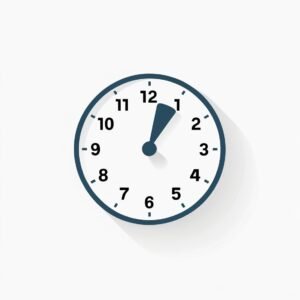
Delayed Gratification
Delayed gratification—also known as the art of waiting—is one of those magical skills that sounds simple… until you try telling a preschooler they have to wait five more minutes for snack time.
It’s the ability to hold off on an immediate reward in order to get something better later, like waiting their turn with a favorite toy or not eating the marshmallow right now because another one is coming if they can just wait a bit (cue dramatic sighs).
It’s not an easy ask for little ones, but it’s a powerful skill that helps build long-term self-control, patience, and goal-setting. And while it might not look like much when a child manages to wait an extra minute without melting down, those small moments are planting the seeds for big things down the road—like finishing projects, managing frustration, and someday… saving up their allowance (instead of spending it all on bubblegum in five minutes flat) (Mischel, W., Shoda, Y., & Rodriguez, M. L. 2011).
How to foster it:
- “Waiting Games”: Like having to wait a turn to get a sticker or snack at group time.
- Visual Timers: Help children understand time and wait for something they want (e.g., “We’ll go outside when the timer rings”).
- Praise Waiting Behaviors: Notice and name when children wait: “You waited so patiently for your turn—thank you!”
Experience:
If there’s one thing preschoolers are universally gifted at, it’s enthusiasm—especially when something exciting is on the horizon. So, when we told the children that the local fire department was coming to visit, the room practically vibrated with anticipation. We use our usual “how many sleeps?” countdown to help with big events, but let’s just say… the concept of waiting during the actual day was a whole different story.
Cue: one million tiny voices asking every 45 seconds, “Are they here yet? Are they here yet??”
To help ease the tension (and save our sanity), we brought out our trusty visual timer. We explained that when the red disappeared, it would be time to meet the firefighters. The effect was magical. Instead of constant questioning, children began to check the timer—some even gave updates to their peers like little announcers: “It’s almost halfway!” or “Look! It’s almost gone!”
That simple tool helped turn impatience into understanding. And not only did it ease the build-up, it also gave us the perfect way to explain when something had to end, too. Later that day, when playtime was wrapping up, one child sighed and said, “Like with the firefighters… fun stuff has to stop sometimes.”
And just like that, we saw delayed gratification in action—the growing ability to wait for something exciting and to handle when something good comes to an end. With a bit of structure, a visual cue, and some consistency, we helped turn a potentially chaotic day into one full of excitement, learning, and—most impressively—patience.


Behavioural Flexibility
Behavioral flexibility is all about rolling with the punches—or in preschool terms, being okay when things don’t go exactly as planned (which, let’s be honest, is often). It’s the ability to adapt when routines shift, plans change, or the glue station is closed again because someone got a little too enthusiastic.
Preschoolers who are building this skill tend to manage transitions and little disappointments with a bit more ease. Instead of falling apart when it’s indoor play instead of outdoor time, they might take a breath, shrug, and say, “Okay… but can we at least have the bubbles tomorrow?”
It doesn’t mean they won’t struggle—because change is hard, even for adults (I see you, fellow schedule-lovers!). But with support, encouragement, and a few gentle nudges, children start to learn that flexibility isn’t about giving up control—it’s about finding a new rhythm when the old one skips a beat.
How to foster it:
- Routine Change Practice: Occasionally switch things up (e.g., read a book before snack instead of after) and reflect on how it felt.
- Role-Playing Scenarios: Act out “what if” situations—like when it rains on park day—and brainstorm other options together.
- Use Books: Stories like “It’s Okay to Make Mistakes” by Todd Parr can help children understand change and flexibility.
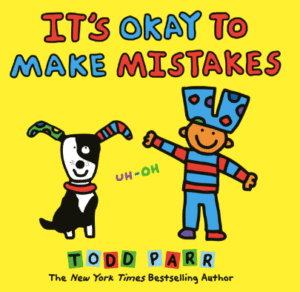
Experience:
I’ll admit it—I like a good schedule. But I had a child in my class who liked it even more. He was the kind of child who could tell you exactly what was supposed to happen and when, and heaven help us if a routine didn’t go according to plan. Predictability gave him comfort, which made change… well, let’s just say “not his favorite.”
So we started small.
First, we swapped the order of a few familiar things—doing our movement activity after snack instead of before, reading a book before lunch instead of after. These were tiny shifts, but you’d have thought we turned the whole world upside down.
“Why are we doing that now?” he’d ask, looking at me like I was making up rules as I went (which, okay, sometimes I was).
But we explained. Gently. Reassured him that everything else was still okay. And little by little, with support and a few “I know this feels weird” moments, he rolled with it.
Then came the big one: going outside in the afternoon instead of the morning. The old him might have melted like a popsicle in July—but this time? He paused, took it in, and simply said, “Okay. But do we still get snack after?” (Fair question.)
That day, we didn’t just change the schedule—we built behavioral flexibility. He’d practiced adapting in small ways, and those small wins added up to something big: confidence that he could handle it when the world didn’t follow the script.

Self-regulation might sound like a big, grown-up skill—but in the preschool world, it’s built one tiny moment at a time. It’s the child who takes a deep breath instead of shouting, who waits (even just ten seconds) for a turn, or who bravely handles a curveball in the daily routine without collapsing into a puddle of emotion.
And let’s be honest—it’s not always easy. Emotions run high, glitter ends up everywhere, and just waiting for something good can feel like a lifetime when you’re four. But with consistent support, a few playful strategies, and a whole lot of patience (on our part), we start to see those beautiful glimpses of growth: a pause, a choice, a child regulating instead of reacting.
Self-regulation is the glue that holds emotional intelligence together—it helps children manage their feelings in a way that lets them connect, learn, and thrive. And when we model those same skills ourselves (even when we’re also trying not to lose it over spilled paint and forgotten mittens), we’re showing them how it’s done.
Up next in the following post? Motivation—the fuel that keeps little ones curious, engaged, and willing to try again after something flops. We’ll explore what drives preschoolers to learn, how to spark that inner drive, and yes—why sticker charts aren’t always the answer.
Take a deep breath, unclench your jaw, and remember: it’s all part of the process. See you next time—hopefully with fewer tantrums and more deep belly breaths (from all of us).
— The Teacher Behind the Crayons
💬 I’d love to hear from you! Have you had a “pause and breathe” moment with your little learners? Or maybe a funny story about a fire drill and a glitter explosion? Share your thoughts, questions, or classroom wins in the comments below—let’s keep the conversation going.
References
Blair, C., & Raver, C. C. (2015). School readiness and self-regulation: A developmental psychobiological approach. Annual Review of Psychology, 66, 711–731. https://doi.org/10.1146/annurev-psych-010814-015221
Denham, S. A., Bassett, H. H., Thayer, S. K., Mincic, M. S., Sirotkin, Y. S., & Zinsser, K. (2012). Observing preschoolers’ social–emotional behavior: Structure, foundations, and prediction of early school success. Journal of Genetic Psychology, 173(3), 246–278. https://doi.org/10.1080/00221325.2011.632800
Garon, N., Bryson, S. E., & Smith, I. M. (2008). Executive function in preschoolers: A review using an integrative framework. Psychological Bulletin, 134(1), 31–60. https://doi.org/10.1037/0033-2909.134.1.31
McClelland, M. M., Tominey, S. L., Schmitt, S. A., & Duncan, R. (2015). SEL interventions in early childhood. The Future of Children, 27(1), 33–47. https://doi.org/10.1353/foc.2017.0002
Mischel, W., Shoda, Y., & Rodriguez, M. L. (2011). Delay of gratification in children. In R. Baumeister & K. D. Vohs (Eds.), Handbook of self-regulation: Research, theory, and applications (2nd ed., pp. 99–129). New York, NY: Guilford Press.
You May Also Like
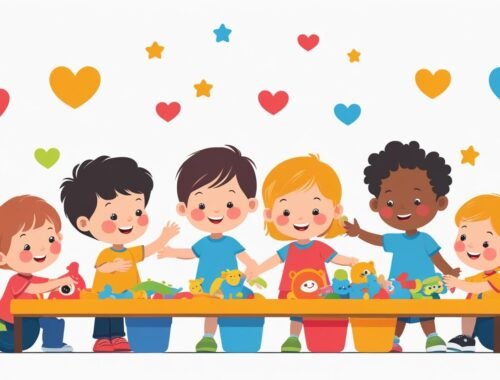
Emotional Intelligence: Teaching children about Social Skills
August 17, 2025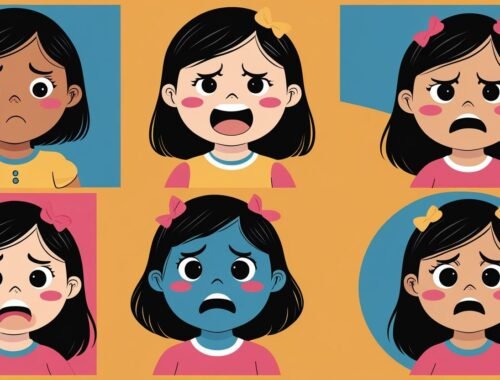
Emotional Intelligence: Teaching children to Recognize and Label Their Emotions
June 18, 2025